After Hours
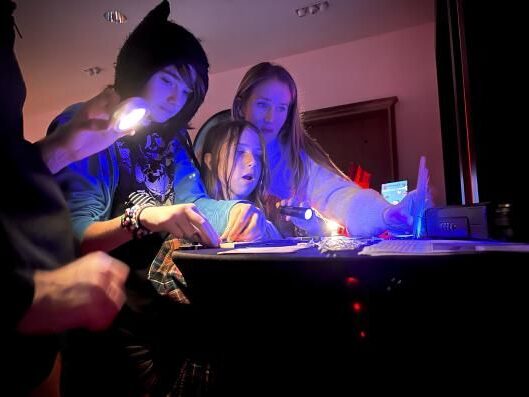
About the Project
After Hours was an escape room I worked on with three other people, themed around surviving both finals week and the wrath of an angry ghost. It was designed to be completed within twenty minutes by a group of three to six people. I was in charge of designing the puzzles and creating the audio for the room.Final Production Bible
The project Miro board can be found here.This video was filmed and edited by Sydney Thompson.
Production
There were a few challenges in designing for After Hours.
- The escape room was designed to be set up and torn down within a UT classroom. This meant that our puzzles had to be built around smaller components that could be moved, rather than permanent structures.
- Our team had no engineers, so the puzzles couldn’t revolve around complicated mechanisms.
- We were working with a budget of $320.
Essentially, our puzzles needed to be portable, simple and cheap. Below are sketches of some of the puzzles as I initially designed them, along with the finalized version of each. Each is themed around a different college major.
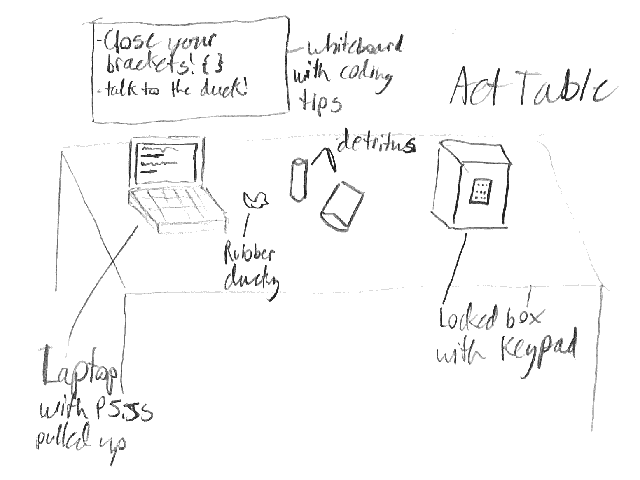
The initial concept for the Arts and Entertainment Technologies puzzle was that there would be a laptop with a coding editor pulled up on the table, but the code would be broken when players tried to launch it. Following the instructions on the whiteboard to fix the broken code would allow players to get the combination for the locked safe.
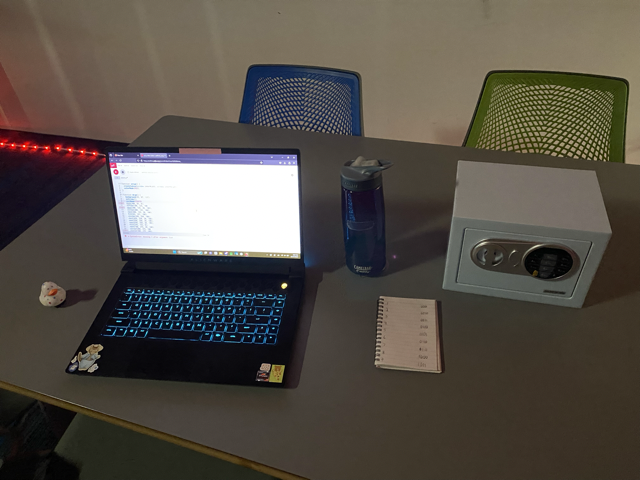
Playtesting showed that the coding puzzle lacked substance in comparison to the other puzzles, so in our final iteration I changed the numbers that would display on screen when the code was fixed to binary and added a binary cheat sheet to the table. This way, players would need to fix the code and then translate the binary in order to get the combination for the locked safe.
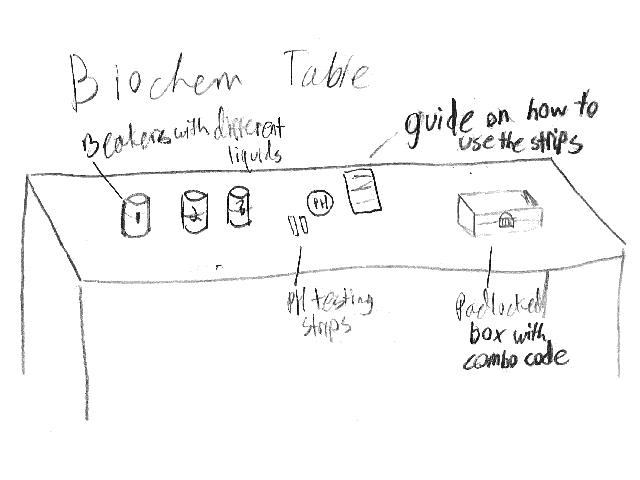
The Biochem puzzle was originally built around three beakers with different liquids. Testing the PH of each of these beakers would give the players the combination for the locked box on the table. Fun fact: this puzzle is the reason we had to tell players not to drink anything as they entered the room.
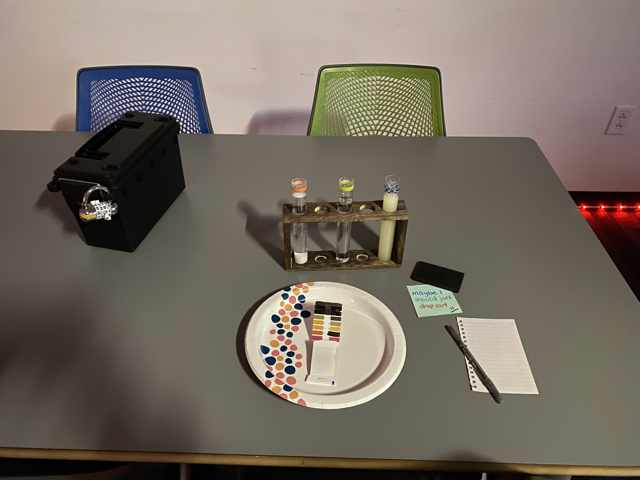
In our final iteration of this puzzle, we color-coded the test tubes with washi tape and added a note on the table with a hint as to which order the PH strips should go in based on their colors.
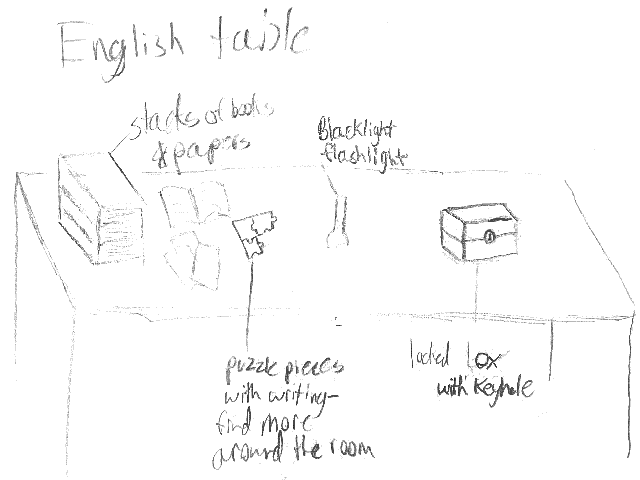
The English puzzle’s design had two major elements: puzzle pieces and a blacklight. The puzzle pieces would be hidden around the room for players to find and assemble to reveal a page number of a book. Flipping to that page and using the black light on it would reveal a hint to find the key.

We ended up hiding the blacklight inside a false book for players to discover. The locked box is actually another false book on the table. During playtesting, I noticed that players wanted to aim the blacklight at everything they could find, so I added some easter eggs written on the back of the papers on the table.
